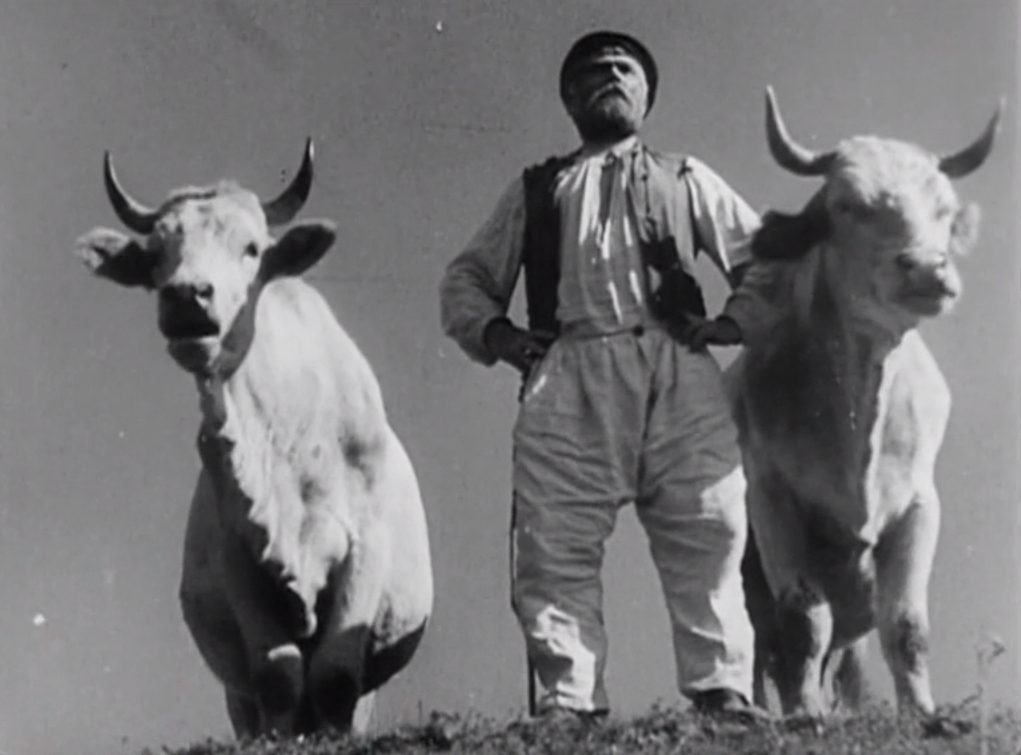
Earth
1930, directed by Alexander Dovzhenko
The first dialogue in Earth is an exchange between two old men in an apple orchard. “Are you dying, Simon?” “Yes I am, Peter.” “Well go ahead and die.” Peter’s words are spoken without malice, and both men seem to understand that Simon’s death is an acceptable part of the flow of life. The presence of small children nearby, eating apples like Simon does, reminds us that new generations must replace the old.
Two things are remarkable about these lines. First and most obviously, the names Simon and Peter both belong to the leader of the Apostles whom Christ renamed “Peter” in Matthew 16:18. Second, because Peter’s name replaces Simon’s, the movie gives away its program in this brief exchange. The principle of replacement will guide the remainder of Earth, as the movie replaces Christian imagery with Communist imagery. The idea is nothing less than to overlay a new religion of Communism directly on top of the old religion, and to make it palatable, much as Christianity itself had long ago substituted its own customs and symbols on top of pagan religions.
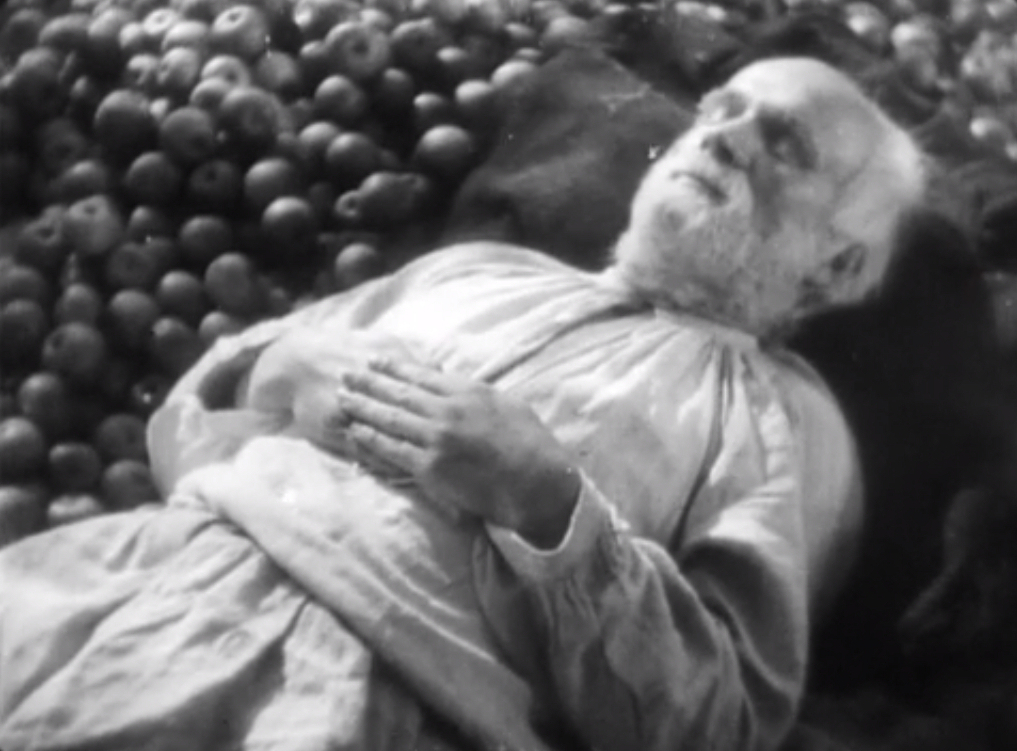
Earth is set in a Ukrainian farming village and the surrounding wheat fields. The peasant farmers, led by a young man named Basil, are collectivizing in order to increase productivity and to raise their economic status, while the wealthier independent farmers oppose their campaign, resisting the redistribution of wealth. Earth was made as propaganda to support the Soviet campaign of agricultural collectivization, and its story appeals to the wish for progress and a sense of economic justice, portraying the independent farmers as obstacles to the peasants’ prosperity. However in promoting Communism as a new kind of religion, the movie takes an unconventional approach to propaganda, aiming its argument at the recalcitrance of tradition in the face of official Soviet atheism. By substituting Communist imagery for religious imagery, it intends to show people what they would gain by trading one for the other.
Basil is characterized as a modern Christ who redeems the peasants while standing up to the independent farmers, the modern-day Pharisees. Like Christ, Basil introduces a new form of social thinking and behavior, upending the established order. In one dramatic passage he drives a new tractor into the village, leading a mass of hopeful peasants like Christ riding into Jerusalem on a donkey. Soon afterward Basil is martyred by an angry resister while dancing alone on a winding road. The road is like Christ’s road to Calvary, his dance a version of the via crucis. Basil’s worldly power, like Christ’s, is magnified after his death. His martyrdom becomes a rallying cry for Communism when another young man, a new version of St. Paul, addresses a vast crowd at Basil’s funeral. In the movie’s last image, Basil and his wife are shown side by side – the movie has resurrected him.
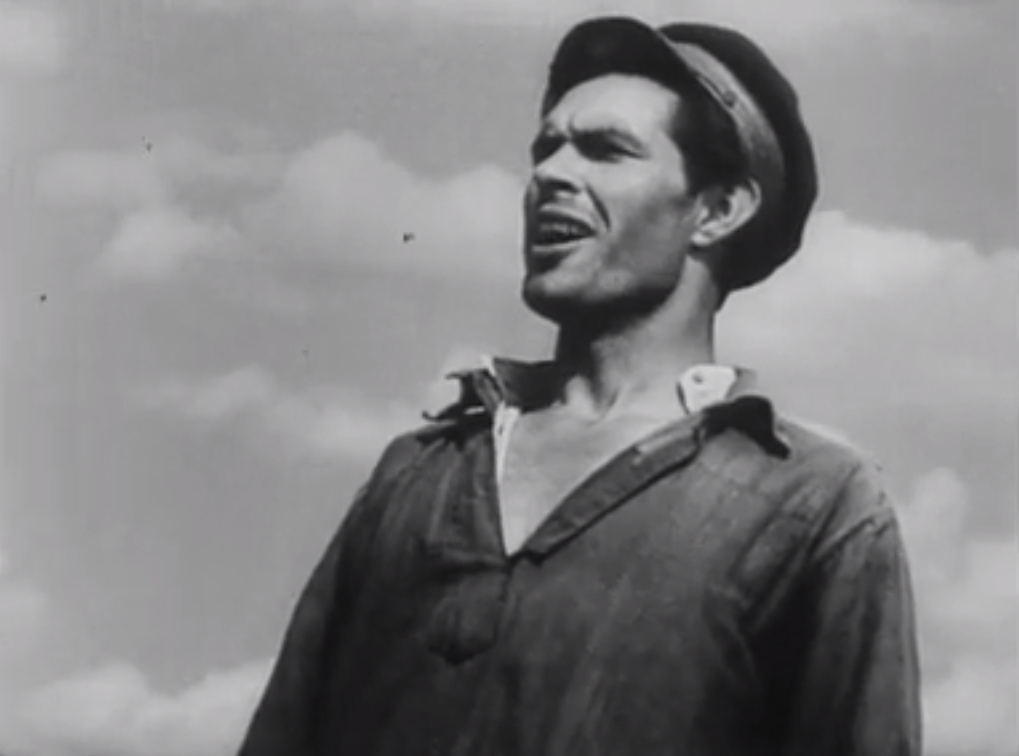
The leading villain also has a religious connection. His name, Choma, is a Slavic derivative of Thomas, the apostle who doubted Christ’s resurrection. This modern version of Thomas represents those who still doubt Communism.
The distinctive photographic style of Earth is a logical result of transforming religious imagery into Communist imagery. Preceding Basil’s martyrdom is a shot of giant sunbeams touching the wheat fields like a painting of divine radiance. Individual characters and anonymous extras are almost always framed like icons, centered on the screen and either looking toward the camera or posing like saints in religious fervor. Humans and cows are often grouped in threes, with the central figure slightly higher or farther forward like Orthodox depictions of the Trinity. It’s no concern of the Soviets if arranging animals like the Holy Trinity looks sacrilegious, but Dovzhenko’s reverence for the natural world appears to be more operative than any irreverence toward religion.
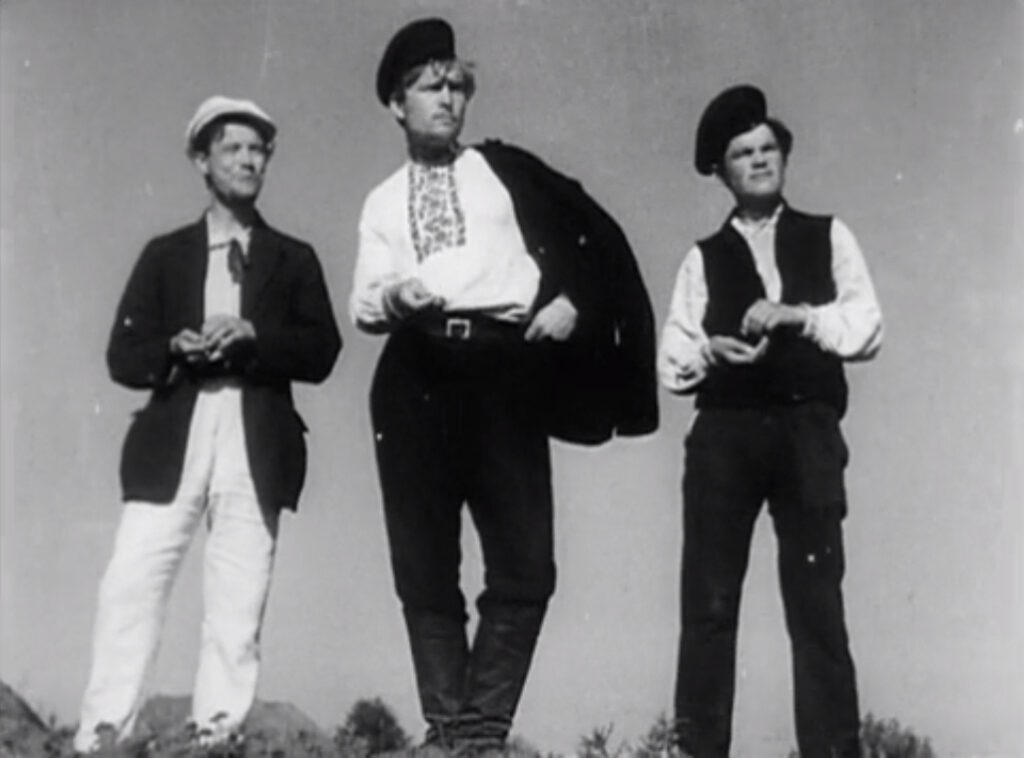
With its slow pacing and large congregations of people, Earth more than vaguely resembles an Orthodox mass. It would be easy to imagine liturgical music accompanying the many slow passages, and the score composed by Vyacheslav Ovchinnikov for the 1971 Mosfilm restoration recognizes this with its ceremonial pacing and wordless choruses. Like a mass the movie features a consecration of bread in the montage of industrial breadmaking halfway through, and there are two major processions – one for the arrival of the tractor, and another for Basil’s funeral. When Basil’s father Opanas announces that his son will have “a new kind of funeral” without priests, the movie openly reveals that it wishes to create a religious ceremony out of secular material.
Normally a Soviet propaganda film about agricultural reforms in 1930 would have no need of extraneous religious content like the large crosses at the burial ground or the Orthodox priest who curses the impious peasants. Earth inserts these deliberately, not only to criticize religion, but also to remind viewers that they are looking at religion’s replacement. After thirteen years of official state atheism, it’s useful to see religious signs in their original context as cues for the new signs replacing them.
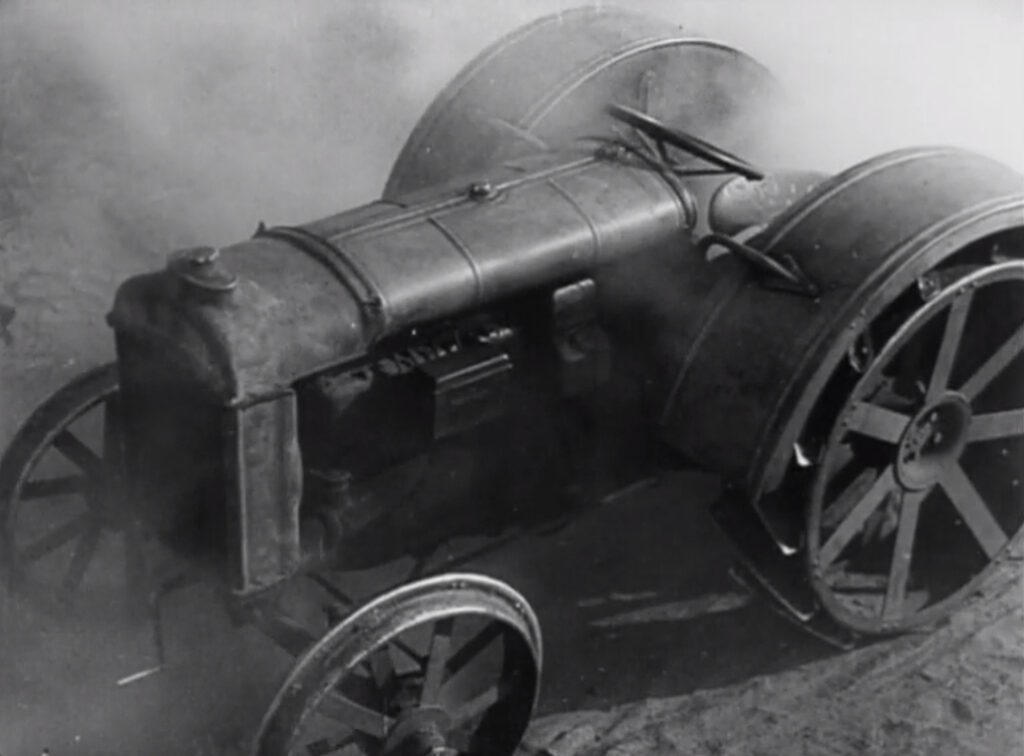
All of this religious imagery builds to a climax whose emotional power is meant to equal the mystical force of a religious ceremony. The groundwork is laid early when Basil brings the tractor to the village. When he stops and gets off, the tractor is photographed from a high angle, revealing its form to be the shape of a cross, the symbol of Christianity. To a Communist in 1930 a tractor is a sacred object, and the movie portrays it as such. Soon afterward the crossroads too is photographed as a bold white cross against the dark landscape. Toward the end, several literal crosses appear in their traditional religious context: old women making the sign of the cross, the cross hanging around the priest’s neck, and the grave markers.
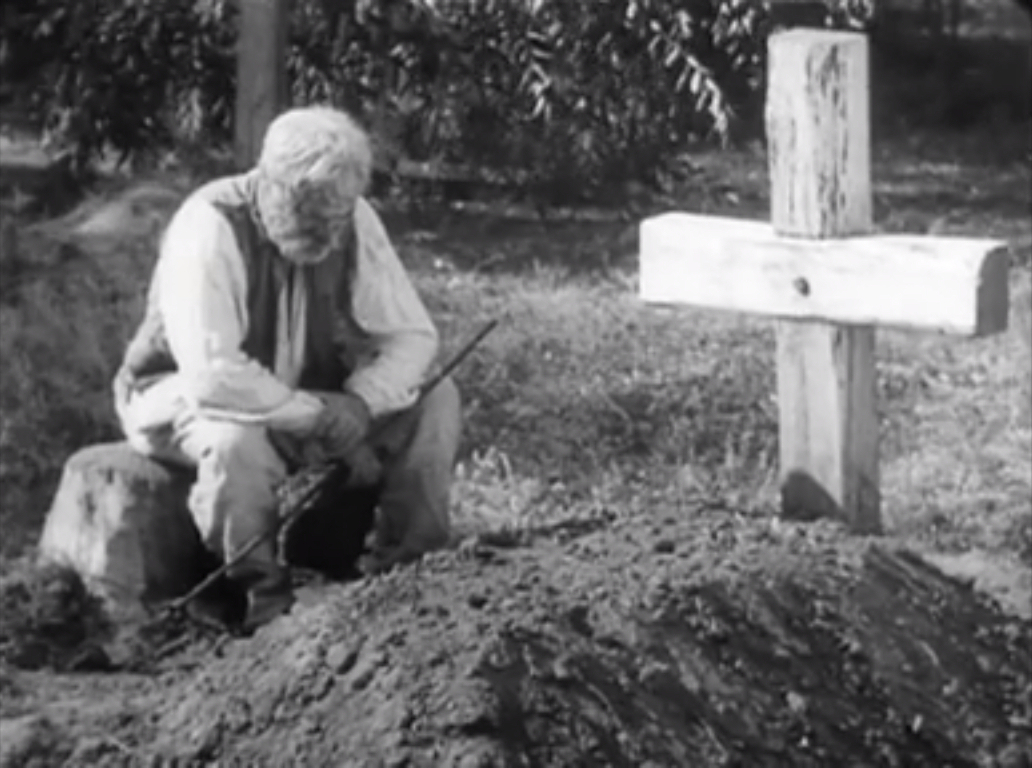
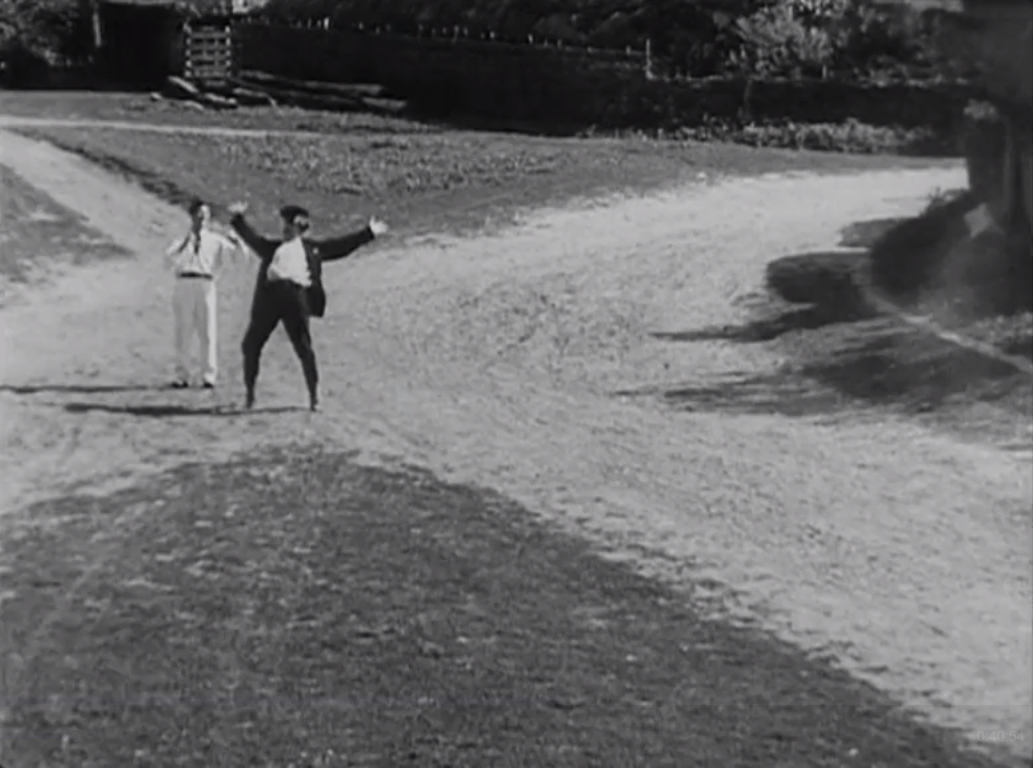
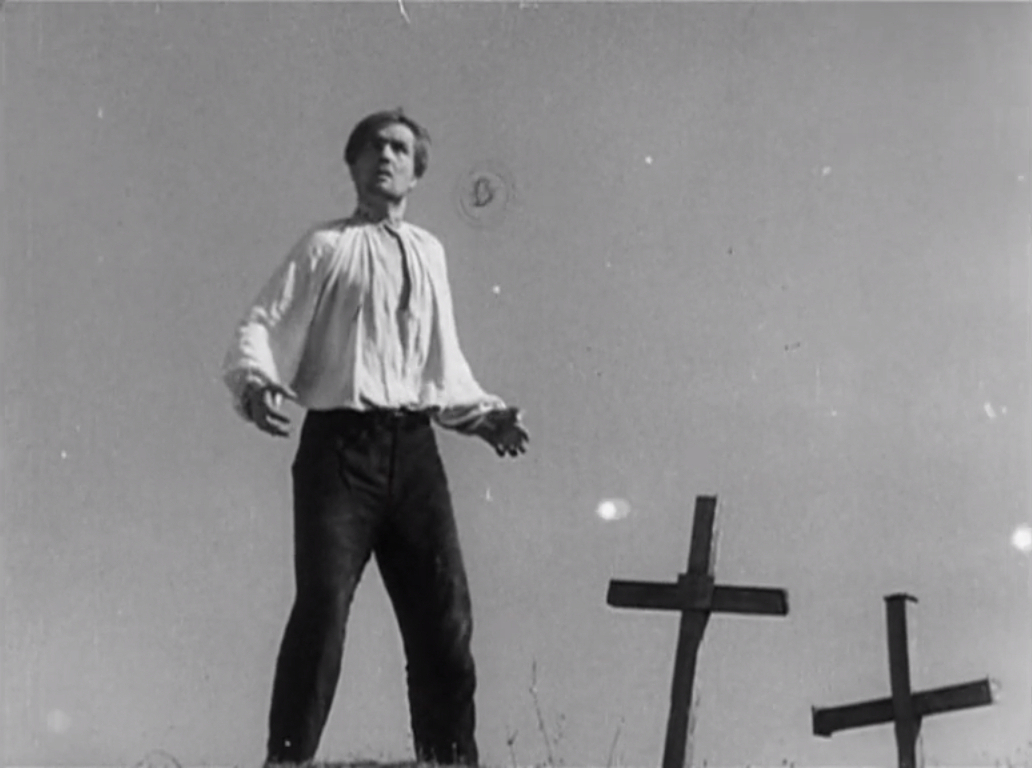
While an energetic young man cut in the same mold as Basil, the new St. Paul, delivers the eulogy at the outdoor funeral, Choma tries to interrupt and confess to Basil’s murder. The crowd ignores Choma, transfixed by the eulogy. The scene cuts back and forth, contrasting Choma’s agitatation with the young man’s self-possession. Next to Choma are two large crosses silhouetted against the sky, but there are no equivalent crosses at the funeral… or are there? The speaker addresses Basil’s father: “But you, sir, our ‘Panas, do not despair. The glory of our Basil will fly all around the world” …he pauses and points to the sky… “like that, up there, our Bolshevik airplane!” Here the movie cuts to an aerial shot of the crowd, looking up and turning their heads in unison. The movie never shows the airplane, but the tractor and all the crosses we’ve been looking at should have prepared us to imagine the airplane ourselves, forming a cross in the sky. By presenting the climactic image entirely to the audience’s imagination, the movie means to effect a small miracle. The heavenly cross, unseen but all the more vivid, should feel as wondrous as would the apparition of a real cross in the firmament.
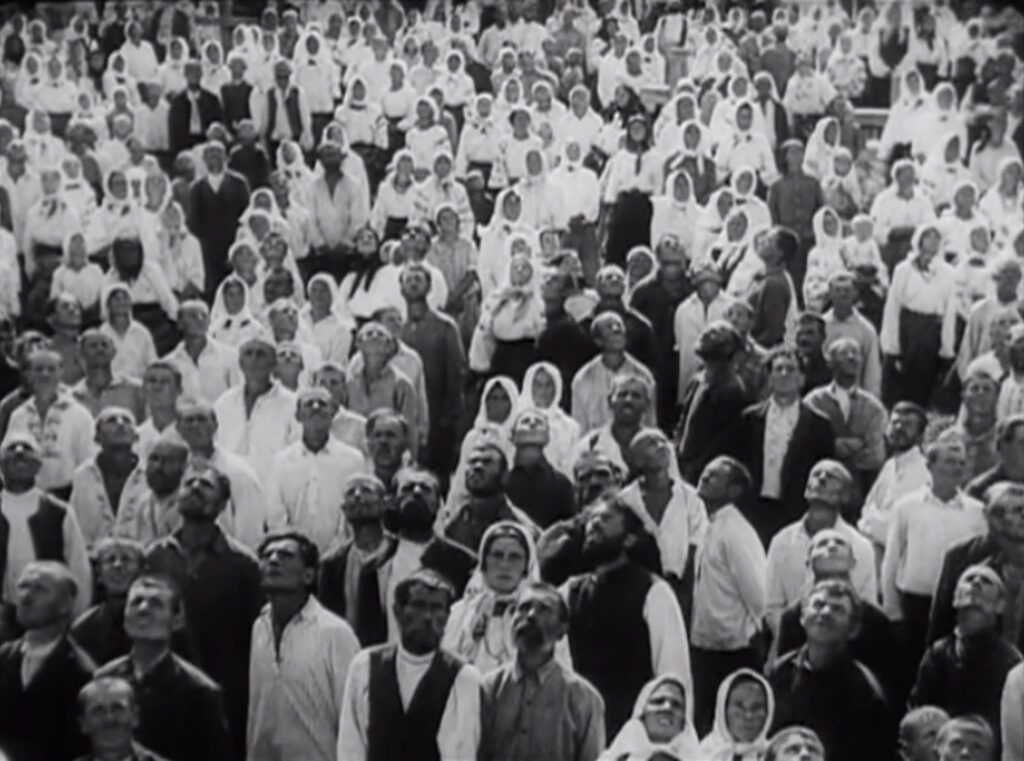
The implied vision of the airplane, a Communist version of the Holy Cross, concludes the story, and the rest is a coda – a nearly three minute montage of wheat fields and apple orchards showing the fertility of the earth as a reward for Communism, followed by Basil’s figurative resurrection in the last shot.
Although Dovzhenko doubtless made Earth with an earnest belief in the movie’s ideology, we know now that forced collectivization was a disaster, neither increasing productivity nor lifting peasants out of poverty. In fact it soon became an instrument in the Holodomor, causing incomprehensible misery and death in Ukraine. Nevertheless the movie’s logic of replacement makes it an almost unique outlier in film history. Its method is not entirely novel – it’s essentially the cinematic equivalent of writing on a palimpsest – but it’s tempting to think of what other applications it might have.
CONNECTIONS:
A Man Escaped – Parallels between the film and a Christian mass
Winter Light – Character named after the apostle Thomas; secular metaphor for the eucharist
Simón of the Desert – Airplane near the end resembling a secular version of the Holy Cross
Blow-Up – Character named after the apostle Thomas
The Hypothesis of the Stolen Painting – Cinema as a kind of mystical ceremony
L’argent – Replacement of religious ideas with corresponding secular ideas